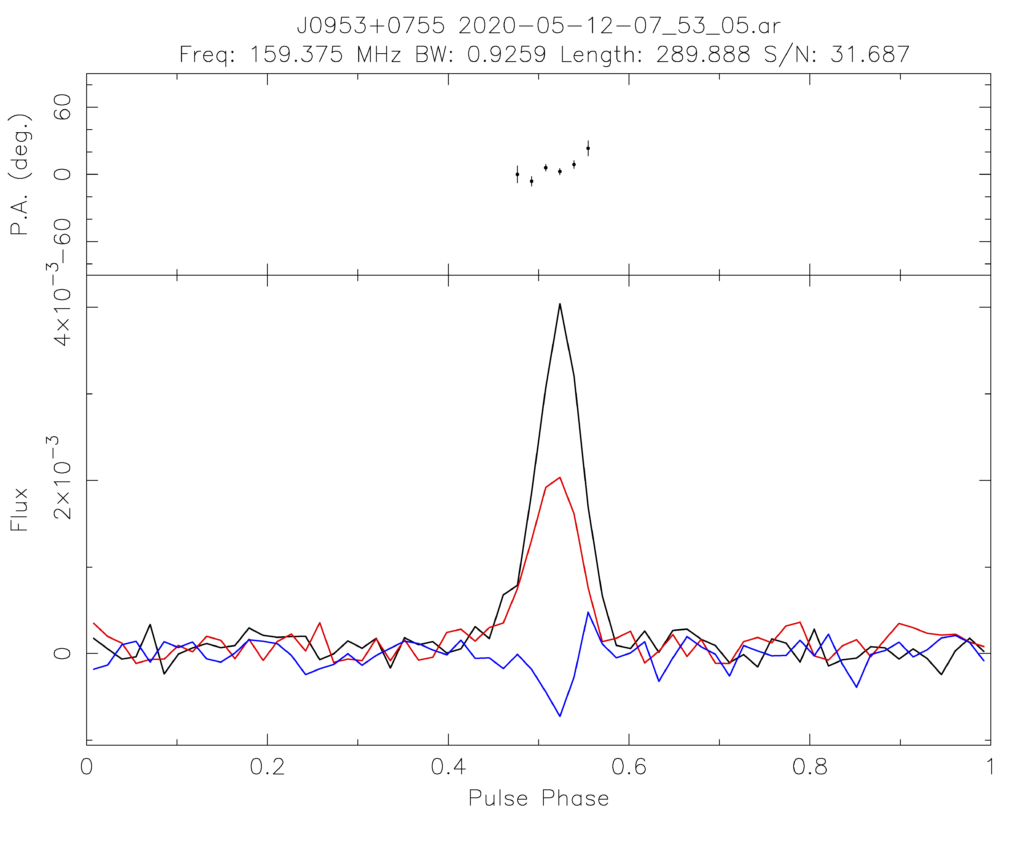Project area/S
- Fast transients and pulsars
- Engineering
Project Details
Pulsars are fascinating astrophysical objects, extremely dense, built primarily of neutrons, rotating at rates of up to several hundreds of times per second and emitting beacons of radio emission. These radio pulses are extremely regular in their arrival times and therefore pulsars can be used for high-precision timing applications, such as searches for low-frequency gravitational waves that are produced by super-massive black-hole mergers. Their timing properties can also be exploited in the commissioning phases of new radio telescopes and instrumentation.
In 2019, two precursor stations of the low-frequency component of the Square Kilometre Array (SKA-Low) were deployed at the Murchison Radio-astronomy Observatory. They consist of 256 dipole antennas and the analogue signals from individual antennas can be digitised and processed. The current software and firmware enable electronic steering of the beam in arbitrary direction in the sky and the formation of the station beam in real-time.
The goal of this project is to perform a series of short observations of a modest sample (up to 50) of southern-sky pulsars and verify their detections. The results of this shallow all-sky survey will be compared with the number of detections expected according to the mean flux densities of these pulsars, the sensitivity of the SKA-Low stations at the observing frequencies and toward the sky positions of pulsars during the observations.
Student Attributes
Academic Background
Astronomy/astrophysics. Computer programming at least at the level of bash scripting and python programming is required.
Computing Skills
Bash scripting, python programming, Linux environment.
Training Requirement
I will recommend the student to participate in the standard PAWSEY training usually provided to summer students as it always has very relevant set of topics covered.
Project Timeline
- Week 1 Inductions and project introduction
- Week 2 Initial Presentation
- Week 3 Prepare a list of 50 bright pulsars and start collecting short (less than 30 min) observations with the SKA-Low precursor stations
- Week 4 Prepare a list of bright pulsars and start collecting short (<30 min) observations with the SKA-Low precursor stations
- Week 5 Getting familiar with the data to be used in the project and start processing collected data to verify pulsar detections
- Week 6 Analyse the data and verify the detections or non-detections of the observed pulsars
- Week 7 Analyse the data and verify the detections or non-detections of the observed pulsars
- Week 8 Compare number of positive detections against the expectations based on pulsar mean flux densities and sensitivity of the stations. Compare the results against similar surveys conducted earlier with the Murchison Widefield Array
- Week 9 Final Presentation
- Week 10 Final Report

